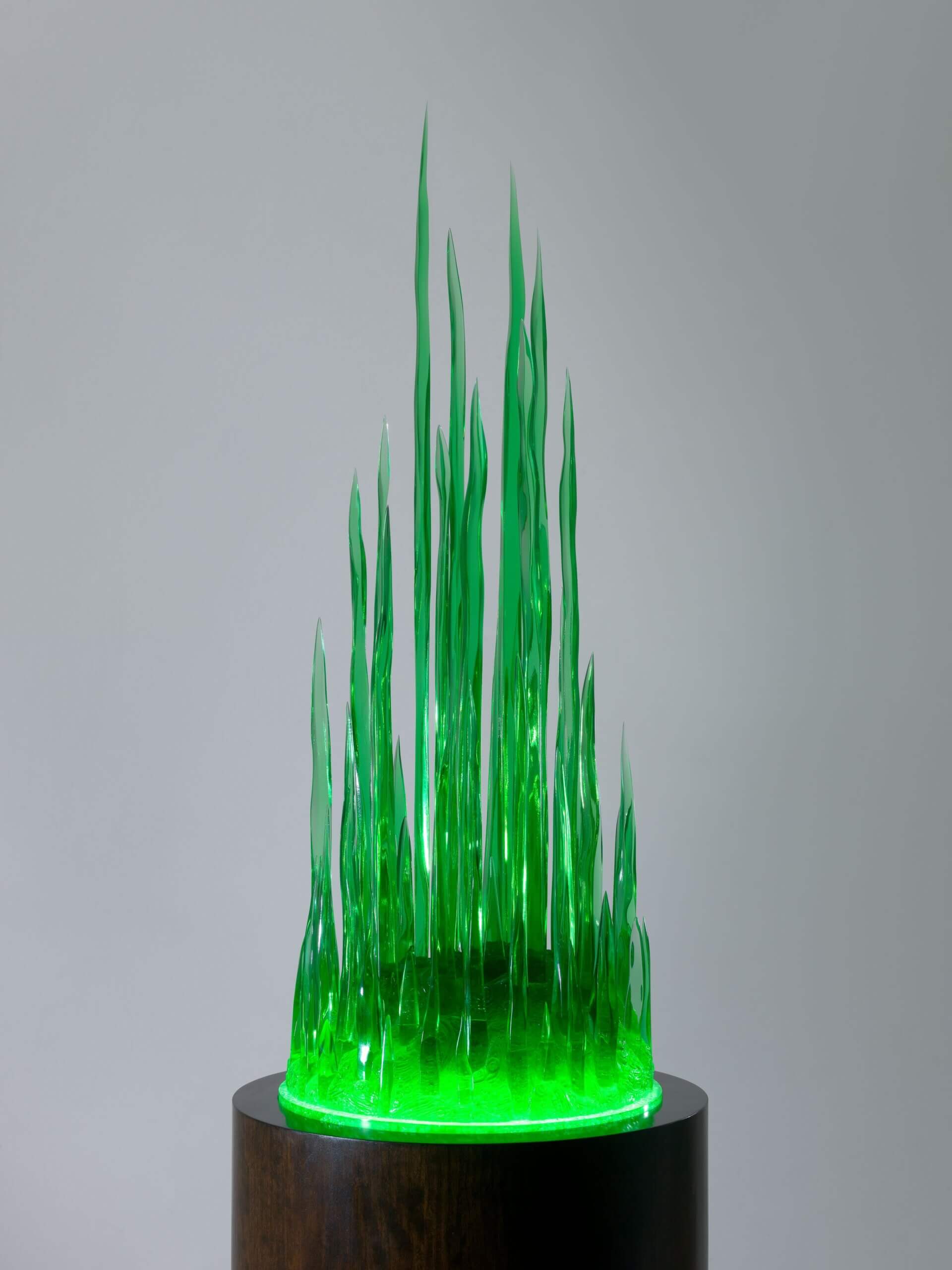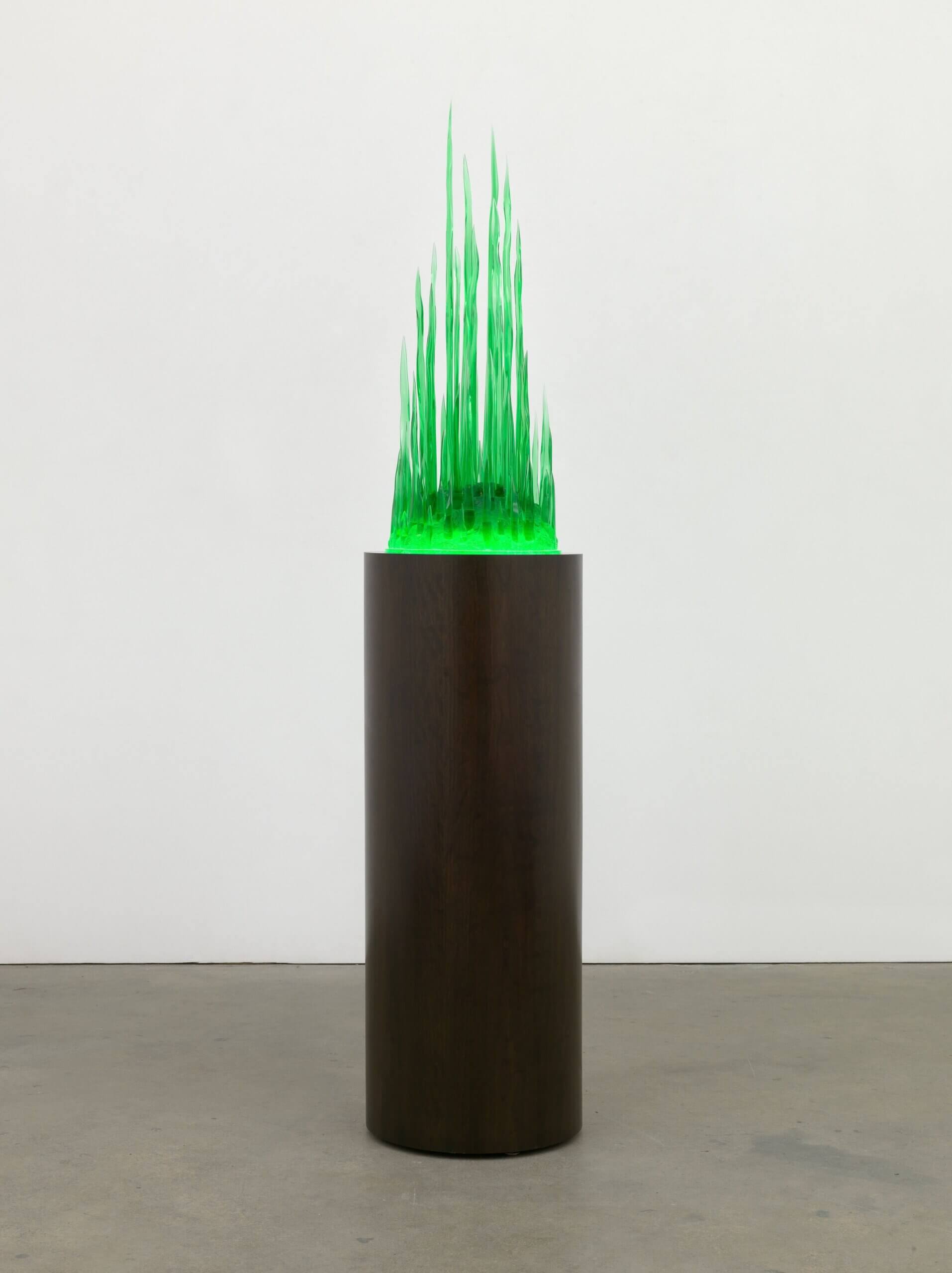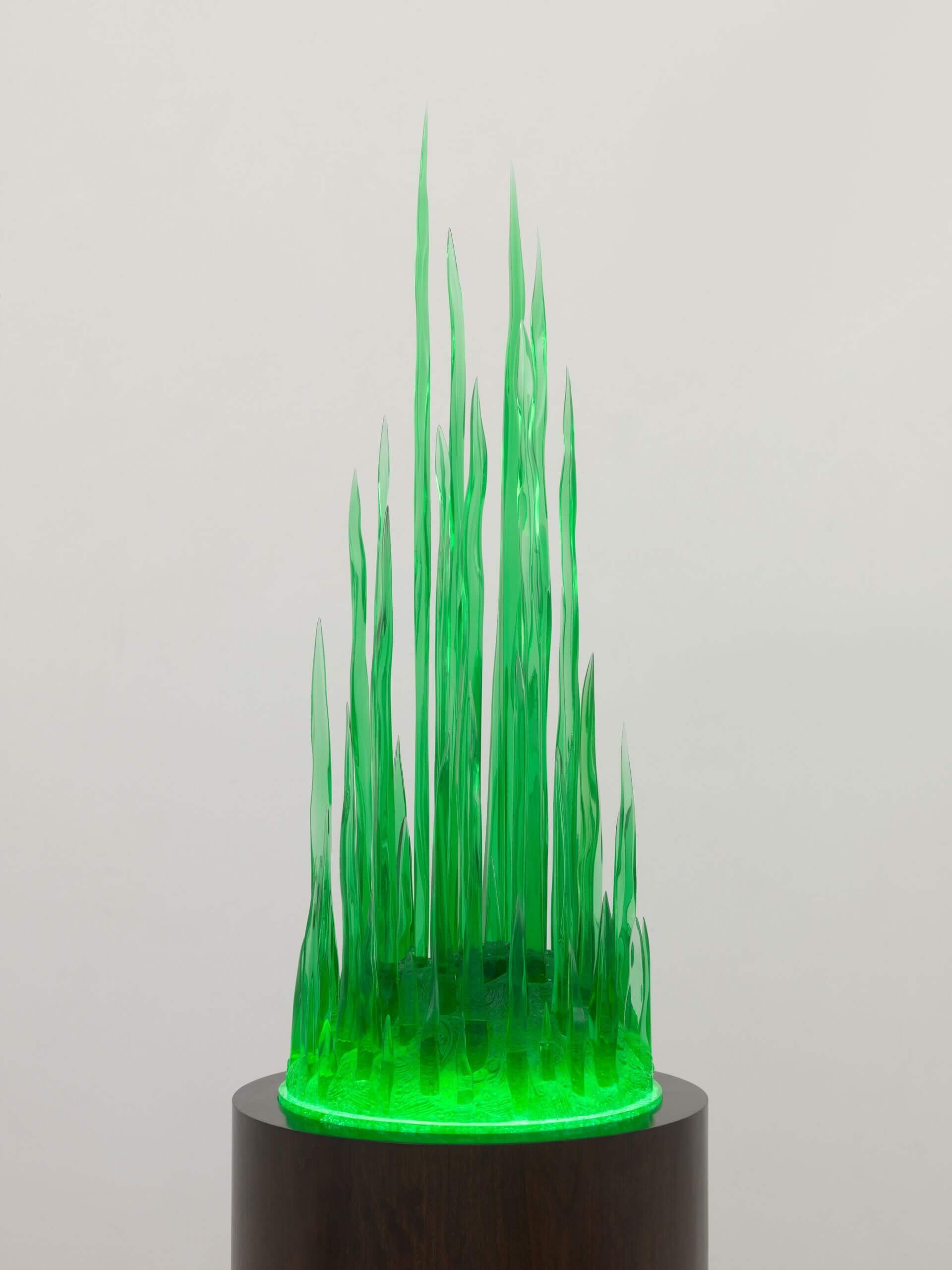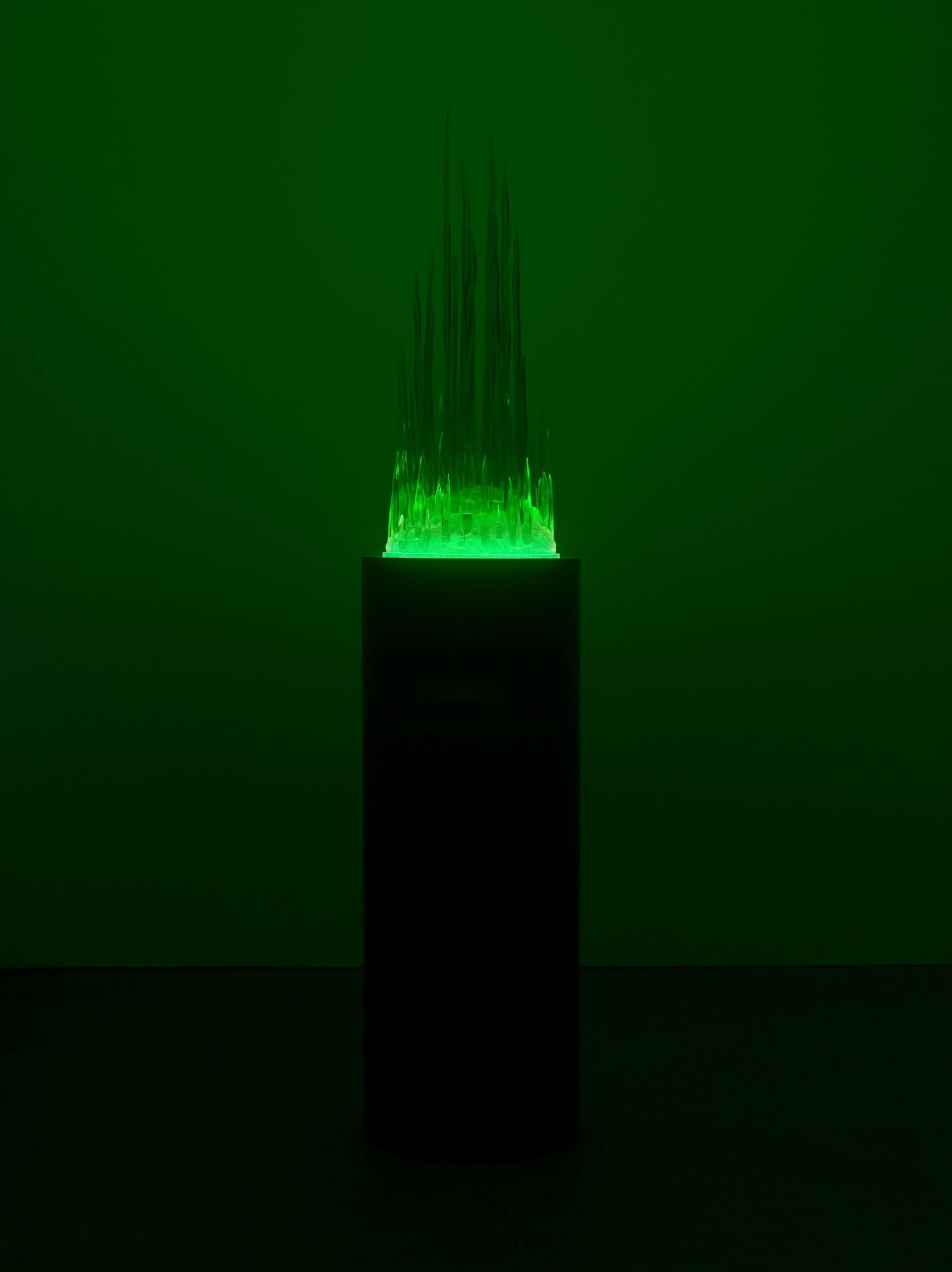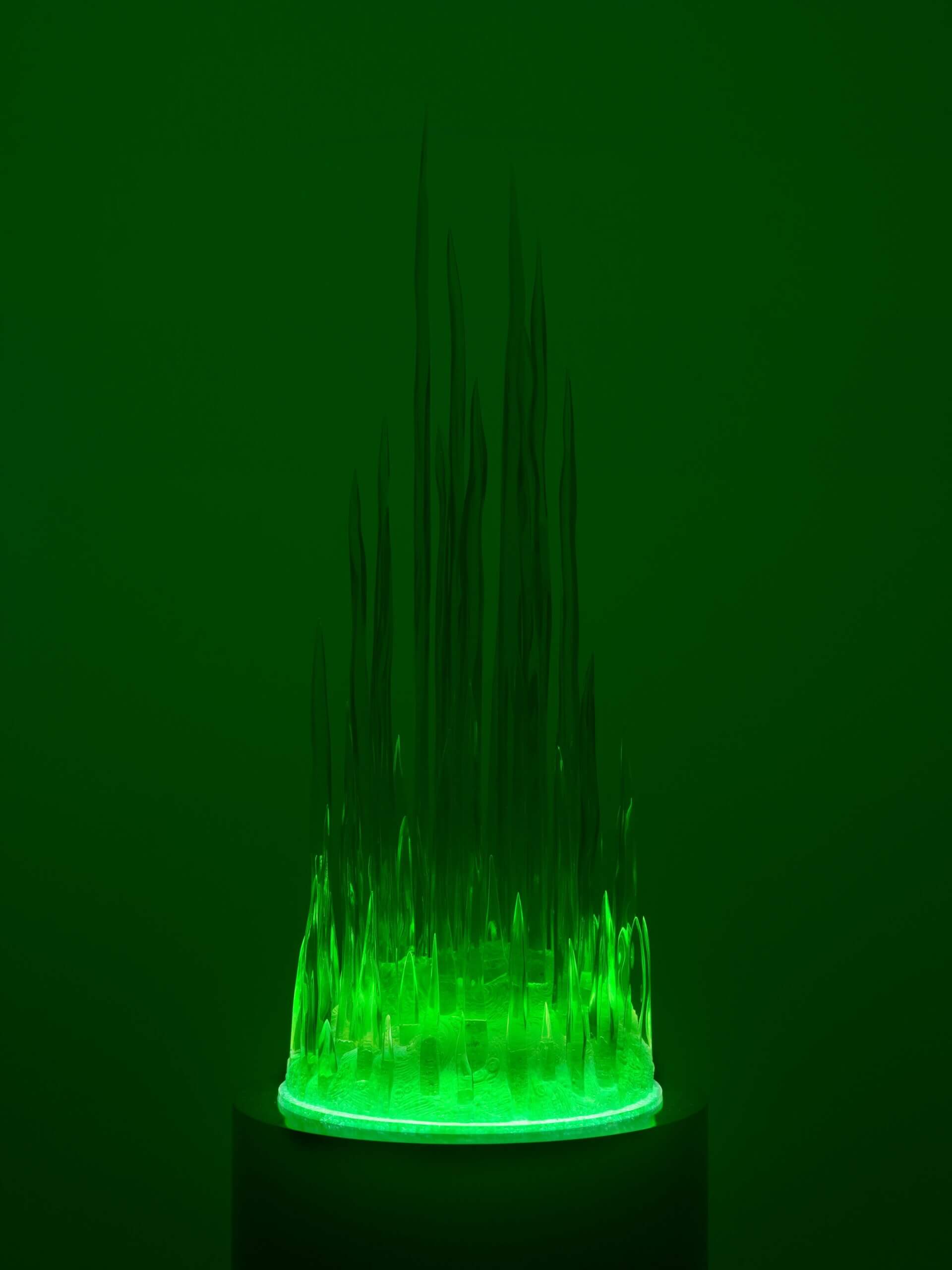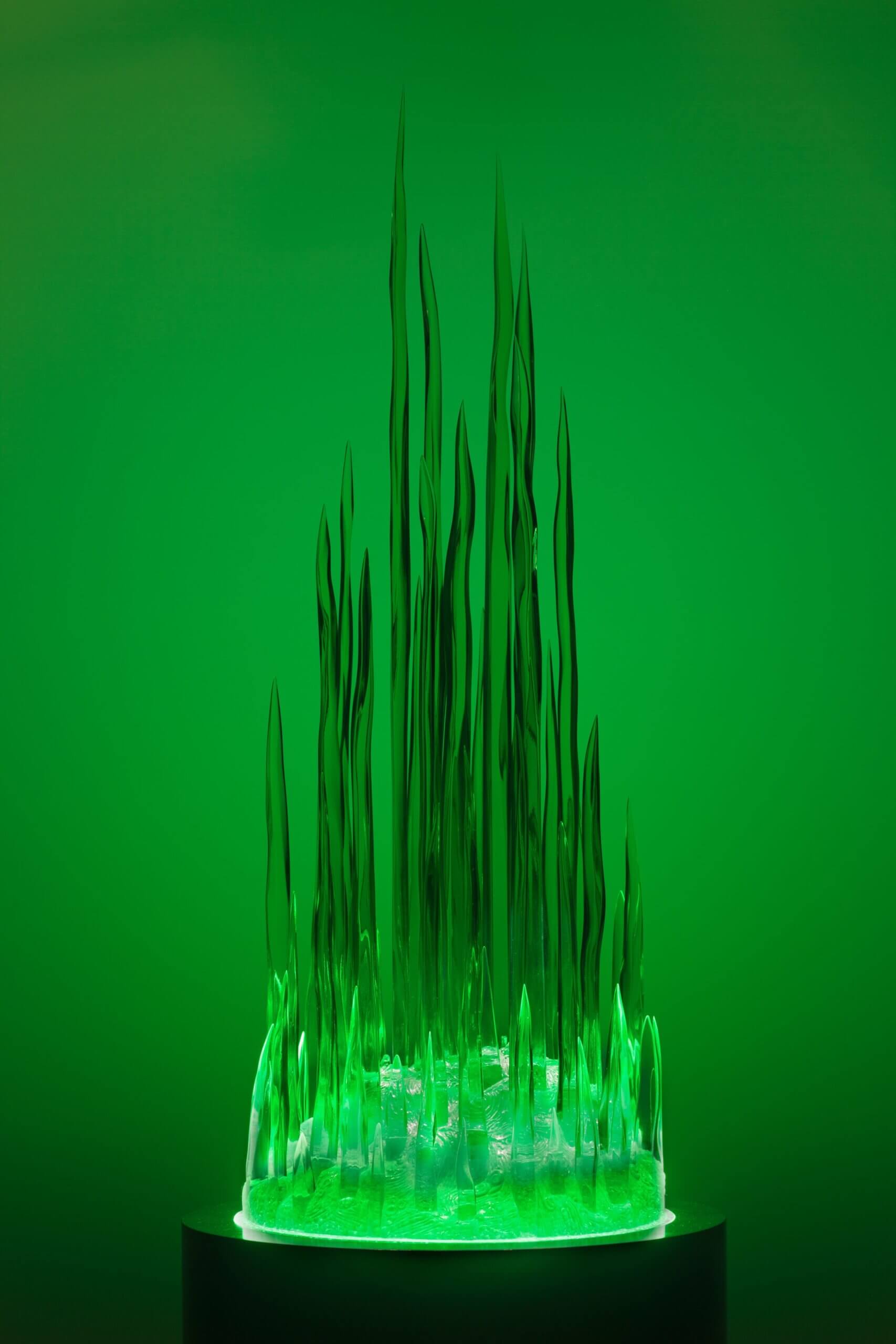
Mike Kelley
City 17
City 17
2011 Tinted urethane resin, acrylic on illuminated base Edition 2 of 2 + 1 AP 205.7 cm / 81 in (height) 42.8 cm / 16 7/8 in (diameter)

Mike Kelley is widely considered one of the most influential artists of our time. Originally from a suburb outside of Detroit, Kelley attended the University of Michigan, Ann Arbor, before moving to Southern California in 1976 to study at California Institute of the Arts from which he received an MFA in 1978. In much of his work, Kelley drew from a wide spectrum of high and low culture, and was known to scour flea markets for America’s cast-offs and leftovers. Mining the banal objects of everyday life, Kelley elevated these materials to question and dismantle Western conceptions of contemporary art and culture.
City 17
Begun in 1999, Mike Kelley’s Kandors series was inspired by the popular Superman comic books. According to legend, Superman was sent to Earth as a baby to escape the total destruction of his home planet, Krypton. Later, he discovers that the capital city of Kandor still exists, shrunk and bottled by the arch-villain Brainiac. Recovered by Superman, the miniaturised metropolis is protected under a bell jar at the heart of his sanctuary, the Fortress of Solitude. As Kelley once explained, Kandor functions for Superman as ‘a constant reminder of his past and as a metaphor for his alienated relationship to the planet he now occupies’. [1] With its tale of traumatic loss and profound displacement, the Superman saga provided the perfect vehicle for Kelley’s late fascination with popular culture references and psychological conditions. Encapsulating the fears and anxieties of a burgeoning Internet age, the Kandor series submits a sustained interrogation of the themes of alienation, memory and repression that preoccupied Kelley throughout his four-decade career.
Struck by the myriad depictions of Kandor that have appeared throughout its long graphic history, Kelley conceived of twenty versions that would transform the city from two-dimensional comic book illustration into detailed sculptures rendered in pristine miniature. Constructed out of jewel-toned resin, each crystalline city corresponds to a different rendition of the fantasy landscape that has captured the imagination of Superman fans since the story’s conception. After discarding early unsuccessful attempts in cast glass, Kelley turned to resin, a medium he found especially adaptable to the inconsistent architectures of the cityscapes selected. ‘Resin can be made to look very much like glass’, he noted, ‘and I could color the cities any way I wanted ... Each Kandor was made in five unique versions, allowing me to explore the properties of resin, including experiments in adding other materials such as sand, glass beads, and metal flakes’. [2] Rising from its plinth as though a forest of jagged stalagmites, the vertiginous terrain of ‘City 17’ is bathed in a phoshorescent and otherwordly light of brilliant emerald. Twisting upwards like inverted icicles, the city boasts the series’ most dramatic architecture. With his Cities, Kelley embarked on a series of formal experiments that aimed to emulate the harmonious relationship that exists between colour and form in the paintings of Henri Matisse. He elaborated: ‘I wanted them to be sculpturally complex, taking into consideration how they would be viewed in the round yet maintaining the sense of the original comics’ flatness. As I envisioned them, they would be akin to paintings by Henri Matisse in three-dimensions, with science-fiction overtones’. [3] Illuminated from below, the vitreous Cities cast an eerie glow over the surrounding space, thus emphasising their own extraordinary topographies, from futuristic skyscrapers to craggy constructions that emerge organically out of their foundations. For Kelley, whose diverse and prolific practice has had a profound effect on American art, the tensions between form and content, and alienation and childhood repression that underpin the Superman myth correspond directly with his own experiences reconciling the high and low, and deconstructing dominant American culture.
[1] Mike Kelley, ‘Kandors’ in Mike Kelley, Rafel Jablonka, ‘Mike Kelley Kandors’, Munich/DE: Hirmer Verlag, 2010, p. 53. [2] Ibid., p. 59. [3] Ibid., p. 55.
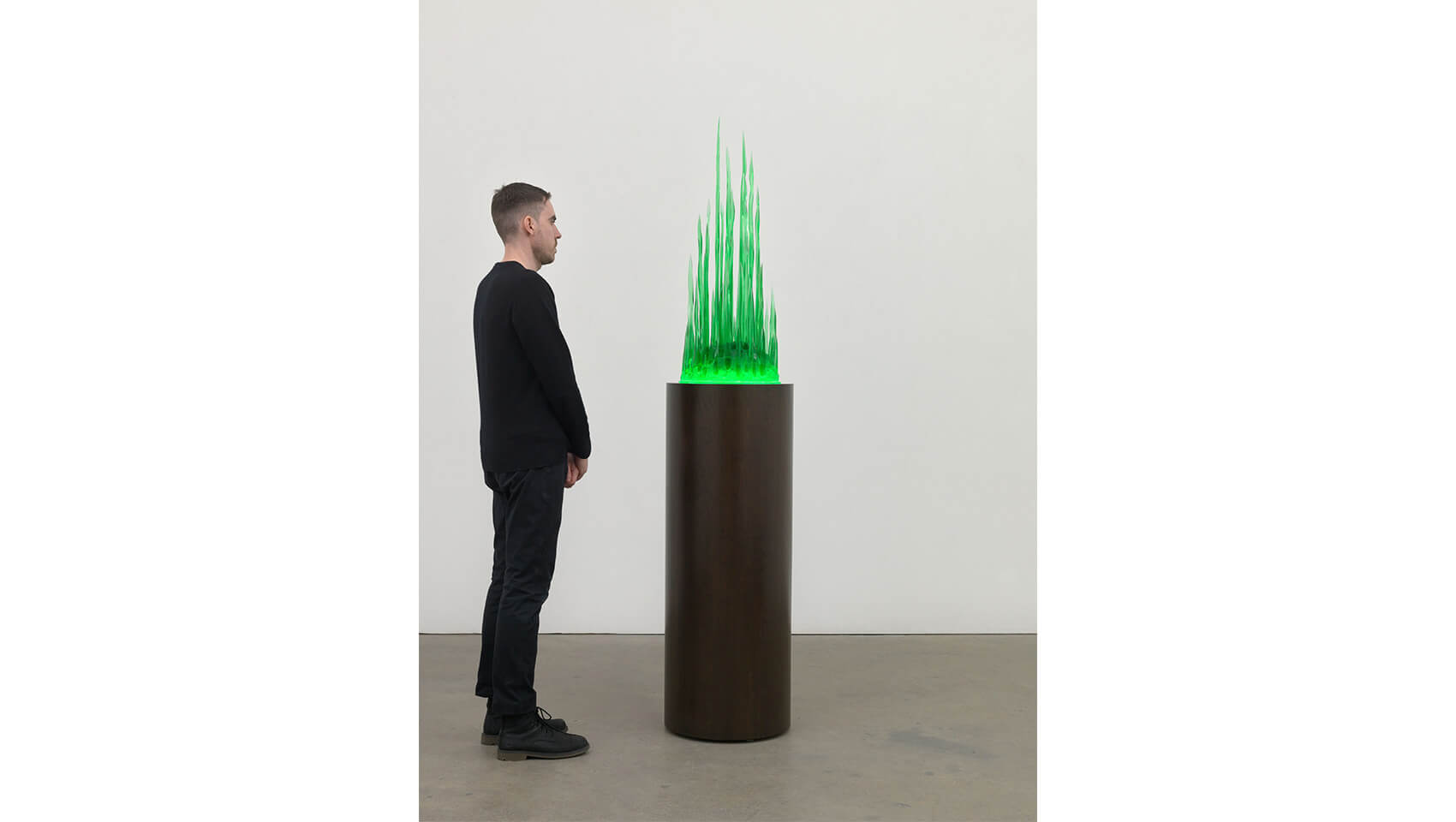
Lorem ipsum dolor sit amet, consectetur adipiscing elit, sed do eiusmod tempor incididunt ut labore et dolore magna aliqua. Ut enim ad minim veniam, quis nostrud exercitation ullamco laboris nisi ut aliquip ex ea commodo consequat.
